We’re joining America’s Credit Union on July 1.
Digital banking will be unavailable from 3 PM June 30 through July 1.
Enroll in the new digital banking experience on July 2 at americascu.org.
For merger details, click here.
Merger With America's Credit Union
On July 2, 2025, your membership account with Texas Telcom Credit Union will be fully transitioned to America's Credit Union.
- New Debit Cards will be mailed to you after June 16th
- New Membership Numbers will be mailed to you after June 18th
- Extended Contact Center assistance will be available the days after the merger: You will be able to reach us from 7 AM to 7 PM by calling 214-320-8818 or 888-742-6551
As we welcome you into the America's Credit Union family, please review the information about the conversion, including important dates, account change guides, digital banking updates, new product offerings, how to contact us, and more.
We invite you to explore all of the details below. Please call us with any questions at 888-742-6551.
Email Communication from America's Credit Union
Texas Telcom CU members with a current email address on file will receive communications from marketing@americascu.org.
MERGER INFORMATION & UPDATES
Texas Telcom CU & America's CU Come Together as One!
Texas Telcom Credit Union Members Approve Merger with America's Credit Union
DALLAS, TX — December 12, 2024 — Texas Telcom Credit Union members have spoken with a resounding 73% approval to merge with America’s Credit Union. This milestone vote signifies a shared confidence in the benefits of a stronger, united credit union. Following unanimous approval from both Boards of Directors and regulatory clearance from the National Credit Union Administration (NCUA), the merger is set to establish a $450 million financial institution serving members across Texas and Missouri.
This strategic partnership combines the strengths of two member-focused credit unions to offer enhanced products, services, and technology. Together, the merged entity is positioned to deliver greater financial value, an expanded footprint, and an elevated member experience, all while providing personalized service and staying true to its community-driven mission.
Leadership and Vision
The newly merged credit union will be led by America’s Credit Union President and CEO Bert Beal, who will succeed Texas Telcom Credit Union President and CEO Pam Toler. Their shared leadership underscores a seamless transition and a commitment to preserving the best aspects of both organizations.
In a joint statement, Pam Toler and Bert Beal expressed their gratitude and vision for the future:
“We are thrilled by the support from Texas Telcom Credit Union members and their shared commitment to serving our communities. By uniting our capabilities, we will enhance the value we provide for our members, offering innovative financial services and elevated experiences across a broader region. Together, we are committed to investing in our products and services to meet the evolving needs of our growing membership while preserving the personalized service and community-focused values that define us. This merger is not just a partnership but a pledge to enrich our members’ financial journeys and foster opportunities for our members, employees, and communities.”
Member Benefits and Transition
The merger brings long-term benefits to members of the combined credit union, including:
- Access to a broader range of financial products and services.
- Innovative digital banking capabilities for convenient, 24/7 access.
- Broader geographic reach with expanded branch and ATM networks.
Texas Telcom Credit Union members will experience no immediate changes to their accounts, services, or terms. Both institutions are committed to providing regular updates and personalized support throughout the integration process to ensure a smooth transition.
A Stronger Future Together
This merger represents a shared vision of “people helping people” at its core. The combined credit union will continue to prioritize the financial well-being of its members while strengthening its ability to impact the communities it serves positively.
More information about the merger and its benefits will be soon available to members, including detailed timelines, FAQs, and contact information for addressing specific questions.
About America’s Credit Union
America’s Credit Union was founded in 1934 and is headquartered in Garland, TX. It maintains strong roots in the communities it was founded to serve. Through a strong commitment to financial empowerment and literacy, digital experiences, and member-first service, America’s Credit Union proudly serves individuals, families, and local businesses with 30,000 members.
America’s Credit Union is federally insured by the NCUA and is an Equal Housing Lender. For additional information, visit the America's CU website.
About Texas Telcom Credit Union
Texas Telcom Credit Union is headquartered in Dallas, TX. Originally founded to serve the employees of early telecom companies in the 1930s, Texas Telcom continues to make membership a family tradition for many Dallas residents.
Texas Telcom Credit Union is federally insured by the NCUA and is an Equal Housing Lender. For additional information, visit the Texas Telcom Credit Union website.
SOURCE: America's Credit Union

